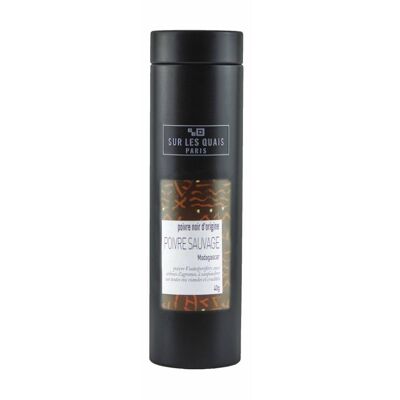


Drimys Winteri Origin: Chile Net volumes and weights: 50ml / 26g / 0.91oz Description: It is also found under the names of sacred pepper, wild pepper of Patagonia, sea pepper, pepper of the Mapuches, pepper of the Indians, wild pepper of Patagonia, etc. Chiloé berry is a false pepper, fruit of the Drimys Winteri tree, one of the oldest trees on the planet, a close cousin of the Tasmanian berry. The term chiloé comes from the island of Chiloé in Chile, where it is found almost everywhere. The islanders call it "Pimienta chilota", translated as "Chiloé pepper", because it looks a bit like a red pepper seed: round, wrinkled and brown. The sacred tree on which the Chiloé grows is called Drimys de Winter, Winter's bark, Foye, Canelo or also Magellan's cinnamon. Wild Patagonian pepper grows in clusters on the tree. It looks like an orange-colored raisin. On the nose, its aroma is delicate and fragrant, slightly acidic, reminiscent of cranberry and hibiscus. It is slightly spicy on the palate, then goes through several vegetal, fruity and empyreumatic flavors, slightly camphorated, with a sweet flavor of lemony candied fruit. The spiciness gradually increases and becomes very present in the middle of the mouth, to gradually lose its strength at the end of the mouth. Directions for use: Use it just crushed in a mortar, rather at the end of the dish, ideally infused in a sauce, a marinade or a simmered dish, but it can be used on a grilled dish without problem. Moreover, it benefits from being lightly roasted before use: dry, 2 min in a frying pan over high heat while stirring so as not to burn it. It does not go through the mill very well unless it is well roasted. This rare berry pairs perfectly with white meats, veal, pork, lamb and poultry. It also goes well with fish, cooked or in ceviche. It is suitable for many stewed vegetables, stews, sauces and tomato-based dishes. It will season your green salads with herbs like mint or marjoram. It will enhance your fresh cheeses and faisselles but also compotes, chutneys and jams. Ideal on red fruits and exotic fruits.























